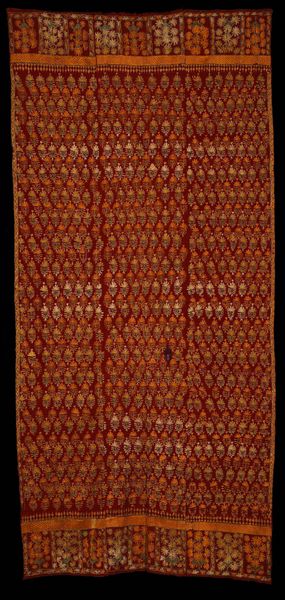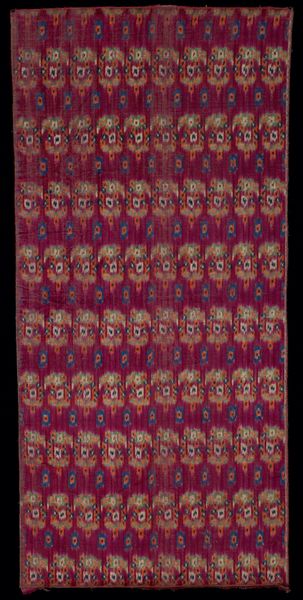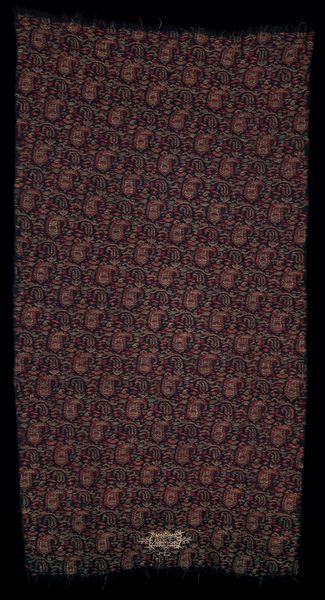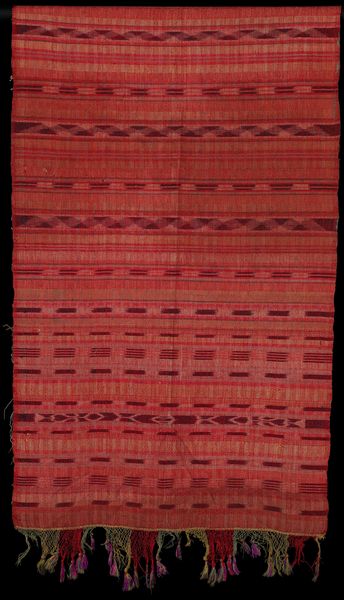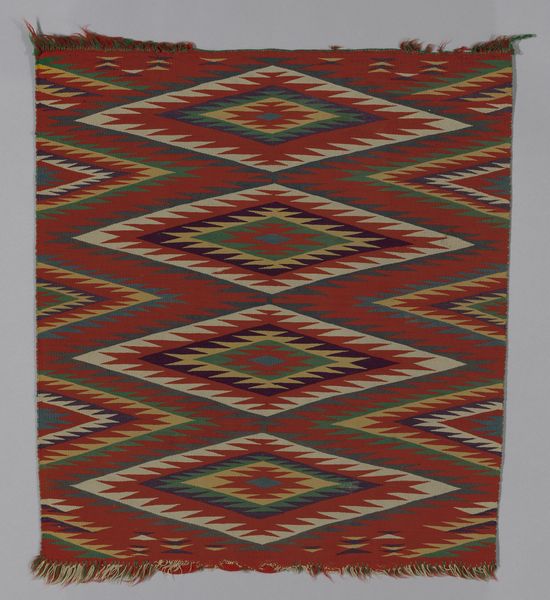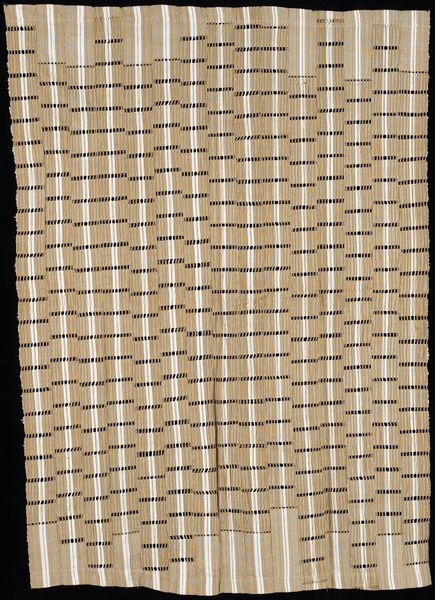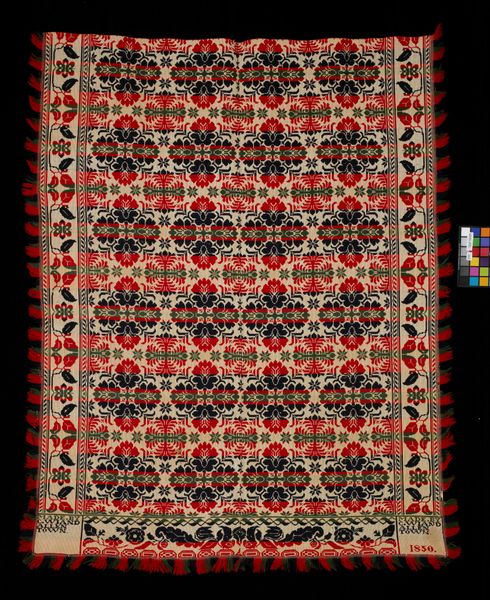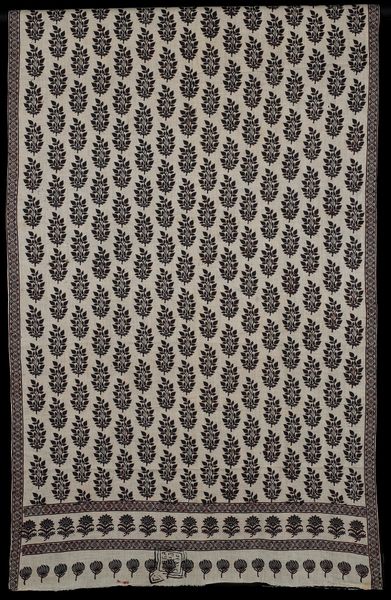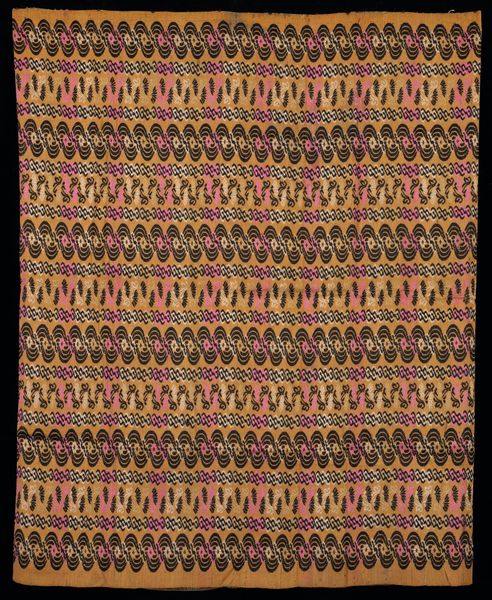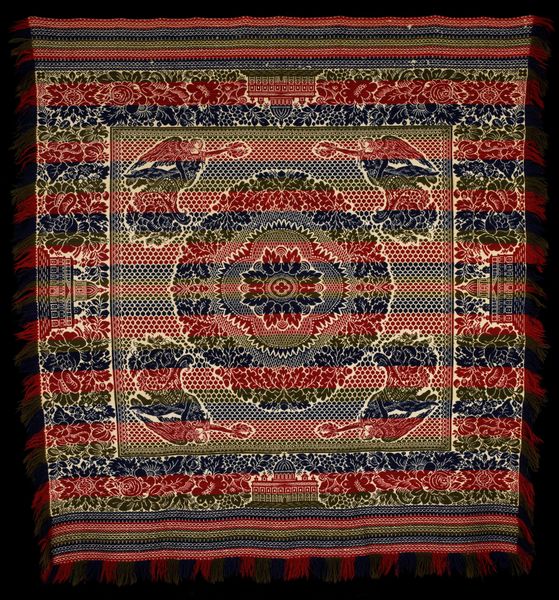
weaving, textile
#
pattern heavy
#
knitting
#
weaving
#
textile
#
geometric pattern
#
ethnic pattern
#
folk-art
#
geometric
#
repetition of pattern
#
regular pattern
#
pattern repetition
#
textile design
#
layered pattern
#
repetitive pattern
Dimensions: 75 x 93 1/2 in. (190.5 x 237.49 cm) (without fringe)
Copyright: Public Domain
This coverlet was woven in 1844 by Charles Wiand, likely using a Jacquard loom, a technology which automated complex weaving patterns. The design is geometric and floral, rendered in deep blacks, reds, and greens. The tight weave and crisp pattern demonstrate the precision afforded by the Jacquard mechanism. This device, introduced in the early 1800s, used punched cards to control the warp and weft, enabling intricate designs to be produced far more quickly than by hand. This dramatically changed the textile industry, initiating a shift from artisanal production to mechanized manufacturing. The coverlet's existence speaks to the changing dynamics of labor, politics, and consumption during the 19th century. We can see how technological innovation reshaped traditional crafts, raising important questions about the nature of work and creativity. This coverlet stands as a testament to the intertwined histories of craft, industrialization, and design.
Comments
minneapolisinstituteofart almost 2 years ago
⋮
Pennsylvania weaver Charles Wiand lived and worked in Allentown and Trexlertown during the mid-1800s. Coverlets with a color scheme and design very similar to this one but with varying woven dates survive in other collections. Clearly, Wiand and his customers preferred this repeating floral and geometric design as well as the striking combination of blue, red, and green wool with white cotton yarns.
Join the conversation
Join millions of artists and users on Artera today and experience the ultimate creative platform.
